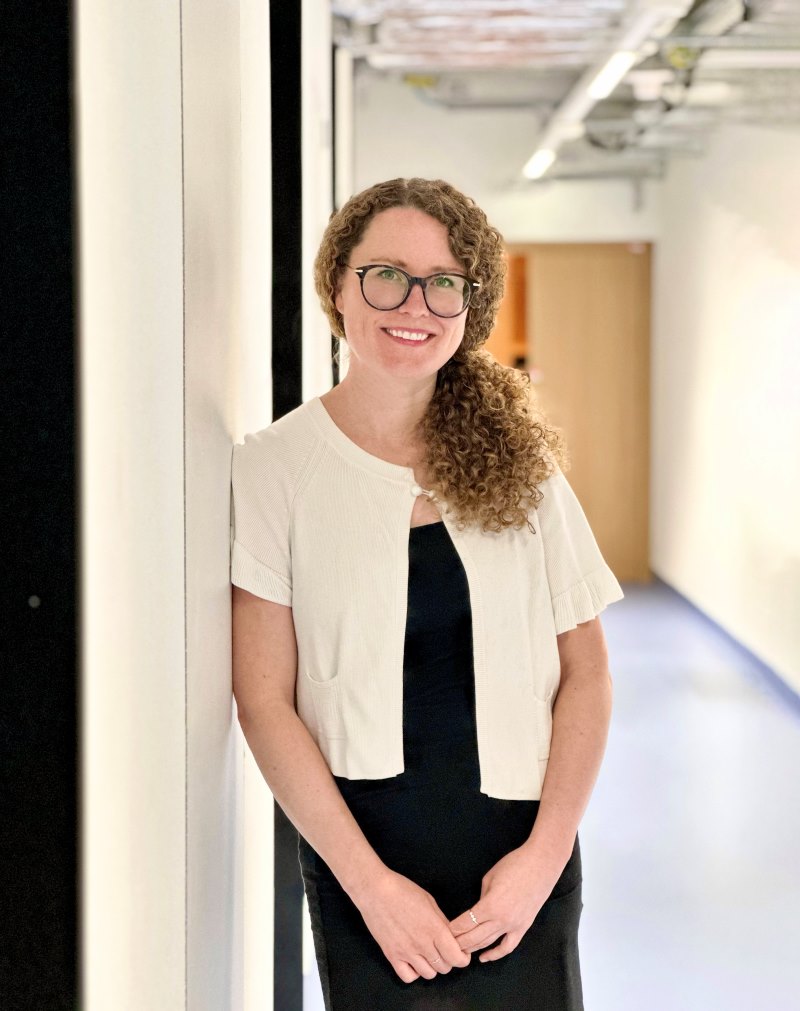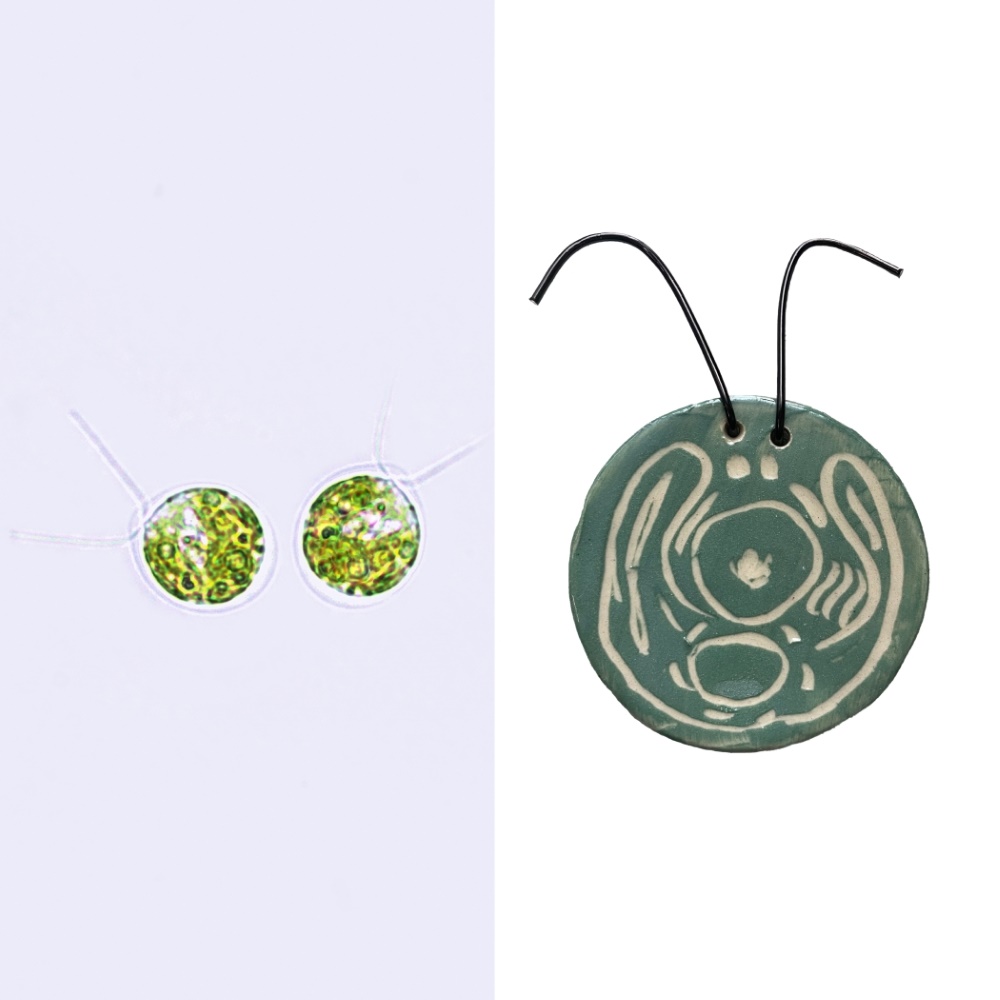May 2, 2024
Biological Timekeeping
New assistant professor at ISTA investigates how cells keep track of time
The human body has adapted to Earth’s day and night cycle. Depending on the light conditions, cellular processes in human cells are active or in snooze mode, forming the foundation for transitions throughout the day. Alicia Michael, a new assistant professor at the Institute of Science and Technology Austria (ISTA) takes a close-up look into the underlying molecular mechanisms. A tiny green alga serves as a model for the scientist’s experiments.

Alicia Michael closes her emails. She walks through her office, grabs two Polaroids from a cupboard, and puts them on a coffee table. Every member of her lab will have a Polaroid. Currently, it is Michael and research technician Christopher Dunworth, but more will join over the next few months. After all, the biochemist just started her research group at the Institute of Science and Technology Austria (ISTA) in early April.
“It’s an excellent opportunity to build up a completely new team,” says Michael with a smile. She grew up in the state of Washington and spent her PhD in Santa Cruz, California. “I try to instill a vibe in my lab that captures the spirit of America’s West Coast: welcoming and upbeat but also a bit goofy. For me, that’s an ideal working atmosphere.”
The internal clock
Michael combines the realms of structural biology and genomics (the study of an organism’s entire genetic make-up) to closely examine Chlamydomonas reinhardtii—a single-cell alga, a bit smaller than the size of a grain of salt. Fondly nicknamed “Chlamy”, it can be cultivated very easily in the lab, requiring just water, a handful of trace elements, and enough light. The tiny algae is a great model for studying circadian rhythms—the biological clock inside organisms. “From mammals and plants to even bacteria, circadian rhythms are an evolutionary adaptation to Earth’s roughly 24 hours of day and night,” explains Michael. They keep track of time and synchronize biochemical processes with environmental changes, such as light or darkness, preparing an organism for the daily transitions.

The on-and-off switching of some genes, for instance, is driven by this internal clock. Michael narrows it down: “Essentially, it is all about proteins, known as ‘transcription factors’ that regulate the internal clock. They interact with DNA to either activate or deactivate genes at specific times.” This tight regulation holds significance, as some genes involved in metabolism need to be active during the day to support energy production and less active during the night when an organism is resting. Michael’s research group tries to get a better understanding of these DNA-transcription factor interactions. For this endeavor, a recently established new technique by Michael and colleagues comes in handy. Their novel evaluation method allows the isolation of DNA-transcription factor complexes in test tubes, which then can be analyzed in great detail using cryo-electron microscopy (cryo-EM). “Using this technique, we’ve already uncovered new insights on these interactions that differ from previous assumptions,” Michael adds excitingly.

Morning grouch? It’s in your genes
In the green alga, approximately 80% of the genes are rhythmically regulated, whereas in mammals, including humans, fewer genes exhibit this pattern. Yet almost all of our cells, from head to toe, have an internal clock driving various cellular processes. Michael’s lab will also study them in human and mouse cell lines to boost our fundamental knowledge in this area. Down the line, this can be relevant for a better understanding of human-specific diseases. Many genetic factors and external influences—like lifestyle choices or irregular sleeping patterns—can lead to the clock not ticking correctly, eventually manifesting in diabetes, cardiovascular diseases, premature aging, or cancer. On a side note, genetics can also determine whether you are a morning lark or a night owl. “The reason can be a mutation in a specific circadian protein, which is hereditary,” adds Michael.
Bright future ahead
At ISTA, Michael’s lab will be right next to plant cell biologist Xiaoqi Feng’s and biochemist Florian Praetorius’. “I’m very lucky to have those amazing scientists who are working in similar fields just down the hallway. This allows for lots of interaction, exchange of ideas, and the use of shared facilities,” Michael says. In addition to the expanding campus and great expertise at ISTA, the interactions with scientists across various fields were the main reasons behind Michael’s decision to join the Institute.
True to her US west-coast spirit, she misses no opportunity engaging with the campus community. If you are intrigued by how cells keep track of time, by cryo-EM, by seeking new interdisciplinary ties, or simply fancy a chat about playing guitar, speak to her on campus.



